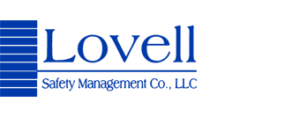OSHA 10 HR CONSTRUCTION COURSE- NRLA (Rensselaer, NY)
April 5th & April 12th, 2022 8:00AM-2:00PMTo aid in your compliance with the various Federal, State and City regulations requiring this training, the LSM safety department is once again offering the OSHA 10 Hour Course. The course is provided by our OSHA certified instructors. Each employee who successfully completes the program will receive a certification card from OSHA.*Pre-registration is required. Please complete attached form.
Completed forms may be submitted to: LSMSafetyDepartment@LovellSafety.com
OSHA 10 HR CONSTRUCTION COURSE- Construction Exchange of Buffalo
March 23rd & March 25th, 2022 8:00AM-2:00PM
To aid in your compliance with the various Federal, State and City regulations requiring this training, the LSM safety department is once again offering the OSHA 10 Hour Course. The course is provided by our OSHA certified instructors. Each employee who successfully completes the program will receive a certification card from OSHA.*Pre-registration is required. Completed forms may be submitted to: LSMSafetyDepartment@LovellSafety.com
OSHA 10 HR CONSTRUCTION COURSE- Northern NY Builders Exchange
March 3rd & March 4th, 2022 7:30AM-1:30PM
To aid in your compliance with the various Federal, State and City regulations requiring this training, the LSM safety department is once again offering the OSHA 10 Hour Course. The course is provided by our OSHA certified instructors. Each employee who successfully completes the program will receive a certification card from OSHA.*Pre-registration is required. Completed forms may be submitted to: LSMSafetyDepartment@LovellSafety.com
2021 OSHA 300A Log – Posting & Filing Requirements
Attached please find information regarding both the posting and filing of your 2021 OSHA 300A log.
lsmsafetydepartment@lovellsafety.com
212-709-8899
Why Do People Get Hurt?
What do we think of when we think of safety and people getting hurt? The first is the pain and suffering of the injured worker and the increasing costs of our workers’ compensation insurance. We see the immediate and obvious implications; however, we often do not recognize the giant cost factors that are lying just underneath our noses.
The lost time we will need to make up by hiring someone new or having our other workers fill in. The effect the injury will have on employee morale and productivity. The indirect costs of this injury, such as property damage and excessive amounts of time spent by management reporting on and following up on the incident.
The legal ramifications of the injury and will OSHA be brought in? Will we be sued or written about in the local newspapers? How will our customers react to it? Will our OSHA frequency rates and severity rates be affected? What will our experience modifier go up to? Will we still be eligible to bid on jobs?
It is clear that for many reasons we do not want to have workplace employee injuries. But, how do we avoid them? We create slogans, put up posters, do employee training, provide personal protective equipment, etc. Yet, we still have injuries. How do we explain why people get hurt?
Is it inattention, as many supervisors are prone to say, or unsafe conditions, poor training, inadequate personal protective equipment? Or is it a result of unsafe behavior? We have reported for years that 10% of injuries are from unsafe conditions and 90% are from unsafe acts/behaviors. Yet we spend most of our attention on ensuring that the physical environment is hazard free and we have met the details of safety regulations, all of which needs to be done. However employees are still getting hurt.
For years now, safety professionals have talked about changing the “culture” of an organization to impact its safety program. But what does that mean to the supervisor on a worksite or an owner of a company trying to get the job done. How does he/she implement that?
We need to begin by looking at how we behave and understanding it, so that we can change it. Please note: behavior is an observable act, not an attitude or an emotion. We are not performing psychoanalysis, we are trying to effect the actions people take. Here are the ABC’s of behavior!
Behavior: The action the person takes.
Consequence: What happens as a result of the action the person takes.
• Develop both positive and negative consequences. Enforce safety rules and identify at-risk behavior. We need to have a disciplinary procedure for those employees who continue to perform at-risk behavior and an incentive program for those who act safely.
• Instill accountability: Company owners, supervisors and employees all play a key role in ensuring a safe and healthy workplace. Owners are responsible for providing a safe and healthy workplace, providing the needed tools, protective equipment and training. Supervisors must be empowered to provide the employee consequences and employees must do their job utilizing safe behaviors.
A
Cold Weather Safety
Thank you,
Safety Department of Lovell Safety Management Co., LLC
lsmsafetydepartment@lovellsafety.com
212-709-8899
OSHA Initiative – Heat Exposure Prevention
Dear Group Member,
Attached please find a summary of the new OSHA initiative for protecting workers from heat exposure. Heat exposure is not restricted to outdoor work in the summer. Many industries have very hot work environments indoors and all year long.
If you have any questions, please contact your local safety representative or the Lovell Safety department.
Thanks,
Safety Department of Lovell Safety Management Co., LLC
lsmsafetydepartment@lovellsafety.com
212-709-8899
NYS HERO Act – Update
Dear Group Member,
Attached please find an update on the requirements of the NYS HERO Act as well as a Fillable PDF of the recently issued NYS template of an airborne infectious disease plan.
If you have any questions, please contact the Lovell Safety Department or your local LSM Safety Representative.
Thank you,
Safety Department of Lovell Safety Management Co., LLC
lsmsafetydepartment@lovellsafety.com
212-709-8899






















